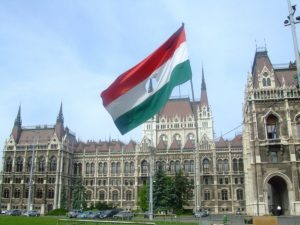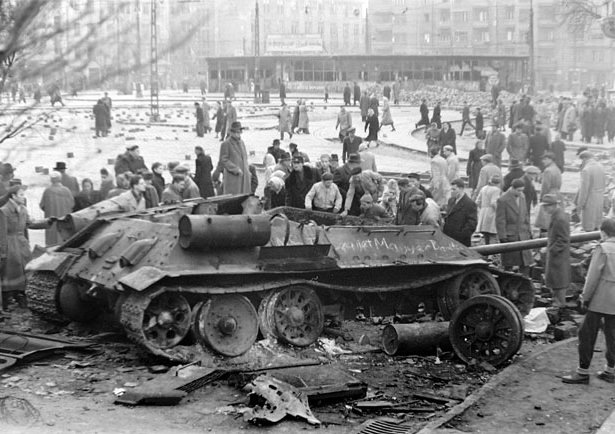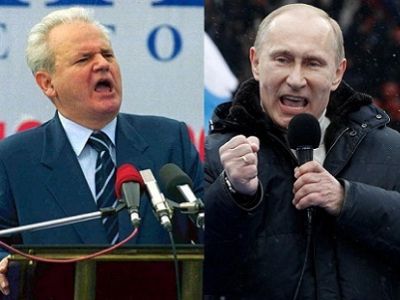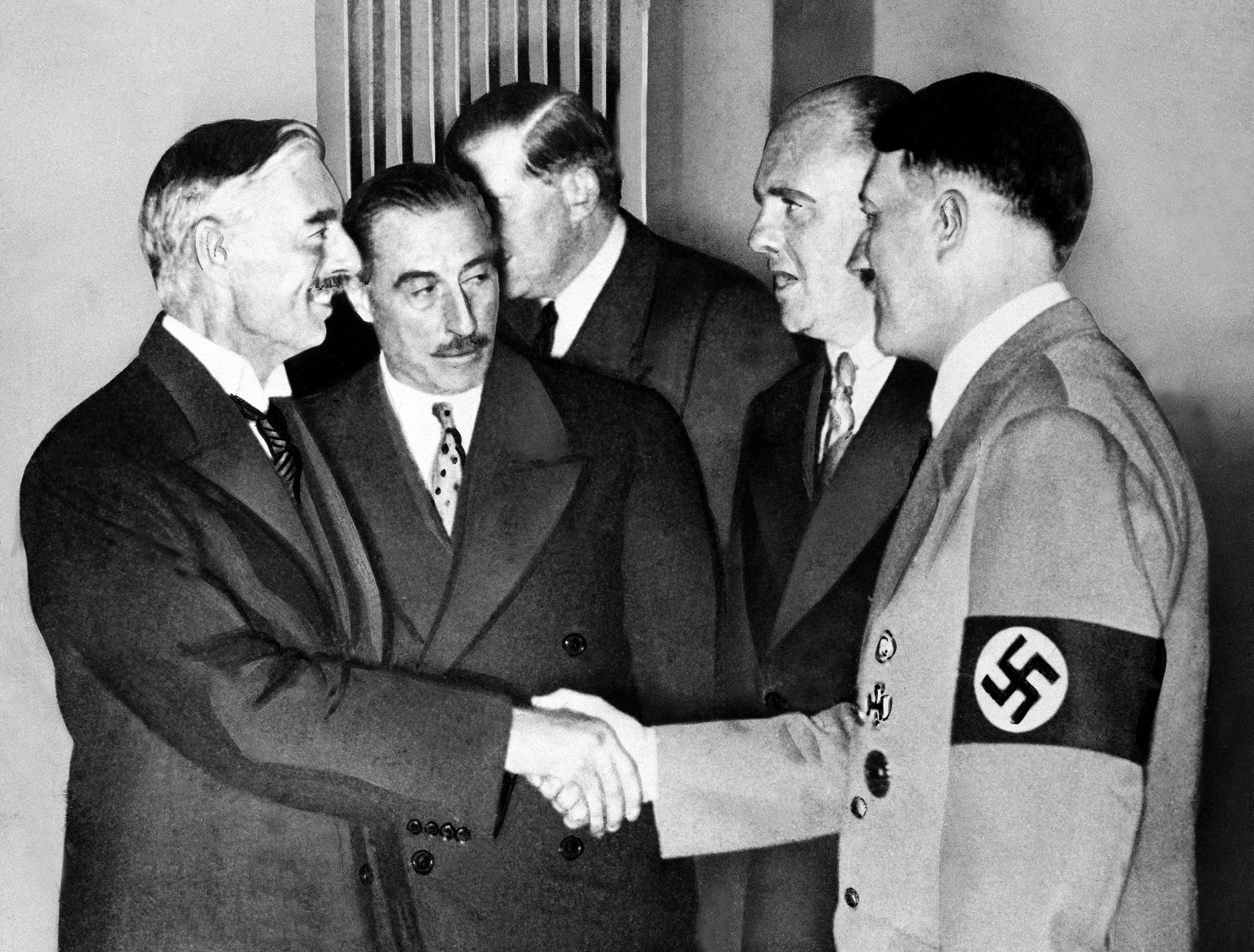Moscow’s actions in Ukraine now “strikingly recall the behavior of the Soviet Union” during the Cold War which “put down with blood any manifestations of independent thinking and freedom in the countries of Eastern Europe,” most notoriously given the West’s behavior at the time in Hungary in 1956, Kseniya Kirillova says.
In a commentary for Novy Region-2
today, the Seattle-based journalist points out that all historical analogies are limited but says that what Moscow did in 1956 in Hungary and what it has been doing in Ukraine in the last year are so similar that one cannot fail to draw comparisons.
After World War II, the Hungarians voted for a non-communist government, but Stalin intervened and imposed a Soviet one on it headed by Mátyás Rákosi who copied the repressive measures of his Moscow master. Not surprisingly, he was hated by the Hungarian people, and after Stalin’s death, he was replaced by Imre Nagy, who launched reforms.

But Rákosi and his hardline followers were not through, and in April 1955, he and they succeeded in ousting Nagy from his post as prime minister and stripping him of his positions in the Communist Party. After that, Budapest resumed the Stalinist approach that it had followed earlier.
The anger of Hungarians then at this turn events resembled the anger of Ukrainians when Viktor Yanukovych reneged, under pressure from Vladimir Putin, on his promise to sign an integration agreement with the European Union. Indeed, “using contemporary language, instead of the expected entrance into Europe, the Hungarians received a ‘Tariff Union’” with Moscow.
“Foreign forces continued to remain on [Hungarian] lands,” just as Russia’s Black Sea Fleet does in Ukraine, but just as Ukrainians were furious at Yanukovych with all his Moscow backing, so too Hungarians were angry at his Stalinist predecessor and launched what can now be seen as a Maidan of their own.
The Hungarian Maidan grew “into a mass uprising,” including “a bloody confrontation” in which “for the sake of justice one must note that there was cruelty on both sides.” Things might not have gotten out of hand, however, if Moscow had not put 6,000 Soviet soldiers into Budapest on the night of October 24.
The following day, these Soviet forces opened fire on the Hungarian demonstrators, at least 61 of whom were killed and 284 wounded – a remarkably close analogy to what happened with the Heavenly Hundred in Kyiv last year. But despite this Soviet action, “it had become clear that the Hungarian Revolution had triumphed.”
Nagy returned to power and abolished the communist party. “Street battles ceased, and for the first time in five days, quiet reigned in the streets of Budapest,” as “Soviet forces began to leave” the Hungarian capital. Hungarians were jubilant, but it was too soon to declare victory because “as we already known from recent history, the Soviet (Russian) authorities are accustomed to take revenge and very harshly indeed.”
On October 31, 1956, Soviet leader Nikita Khrushchev decided not to pull Soviet forces out of Hungary but rather to dispatch 60,000 more in order to suppress the Hungarian Revolution. They arrived four days later in what Moscow called “Operation ‘Whirlwind’” and quickly moved to restore communist and soviet control.
When the Soviet government announced its decision in 1956, it used language that is strikingly similar to that which it has used about Ukraine: “Events have shown,” Moscow said, “that the active participation in this adventure of former Horthyists is leading to the revival of fascism in Hungary and creating a direct threat to our Fatherland and the entire socialist camp.”
“It must not be forgotten,” the Soviet declaration continued, “that in the past war, Horthy’s Hungary opposed our motherland together with Hitlerite Germany.”

According to Moscow, its forces were not invaders but rather were entering Hungary at the request of the legitimate government that had been set up in short order by Janos Kadar
. “It is obvious,” Kirillova says, that Kadar’s first declaration was something in the nature of ‘I am alive and I am legitimate.’”
By November 8, Soviet forces had suppressed the Hungarian Revolution, arresting many and sentencing Nagy and 350 others to death for their role in it. Thirteen thousand were imprisoned. And Hungary was once again firmly in the “socialist bloc.”
Despite the hopes of many Hungarians that the West would come to their aid and the explicit request from Nagy for help, international reaction to what Moscow was doing was limited to expressions of “deep concern,” especially given that the Western powers were distracted by the Suez Crisis.
In 1956, Moscow used these appeals from Budapest and these expressions of concern to suggest that Nagy and his government were working “in close cooperation with Western intelligence services” who, Soviet propagandists insisted, were supplying Hungary with arms – rhetoric which Moscow has repeated about Ukraine and the West now.
Fortunately, there are “important differences” between Hungary in 1956 and Ukraine now, and consequently, the outcome may be different. “Russia is not as strong as the Soviet Union was, and the international community still has a chance to defend the victims of aggression” with something more than expressions of “deep concern.”
If indeed, the international community and the West does do more, Kirillova concludes, it will offer to Ukraine and the other countries of Eastern Europe a chance to “break out” of a situation in which they will experience an infinite repetition of the kind of “’groundhog day’” that “Soviet-Russian foreign policy” continues to try to “celebrate.”





